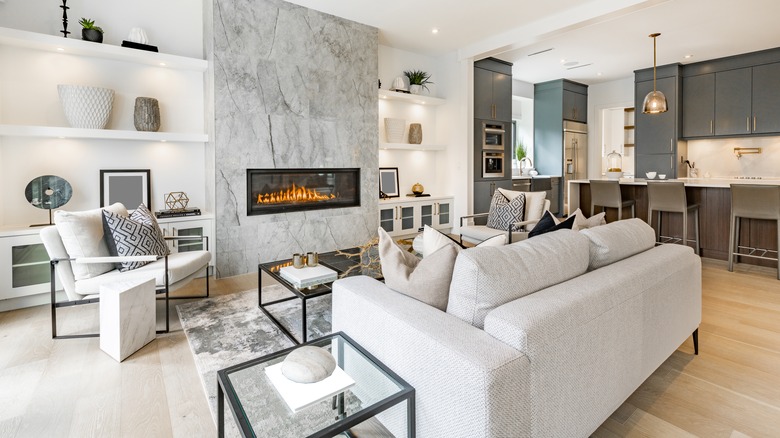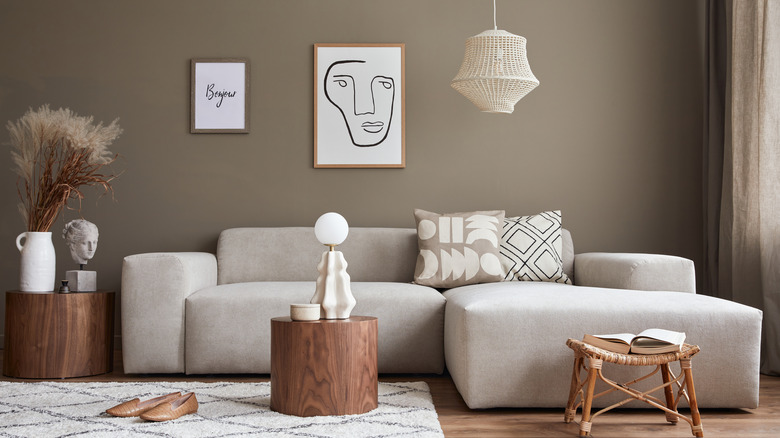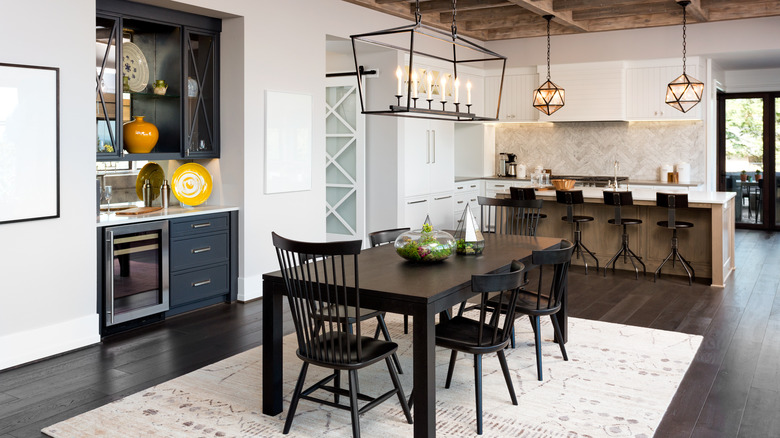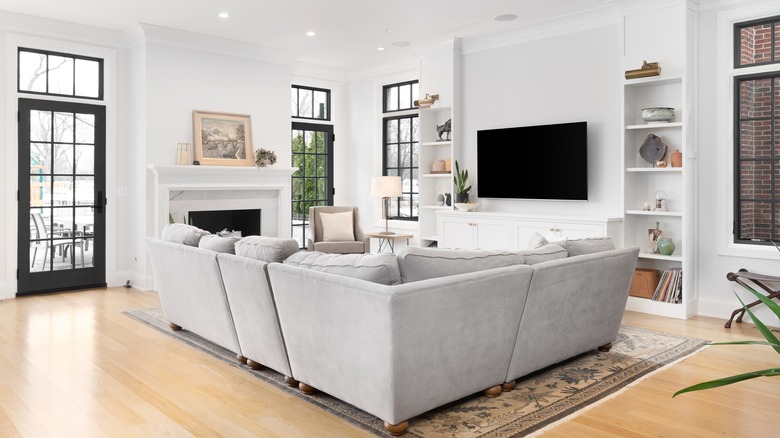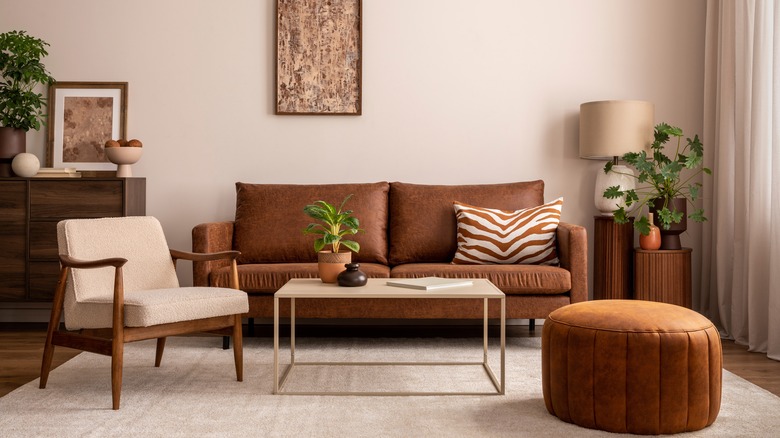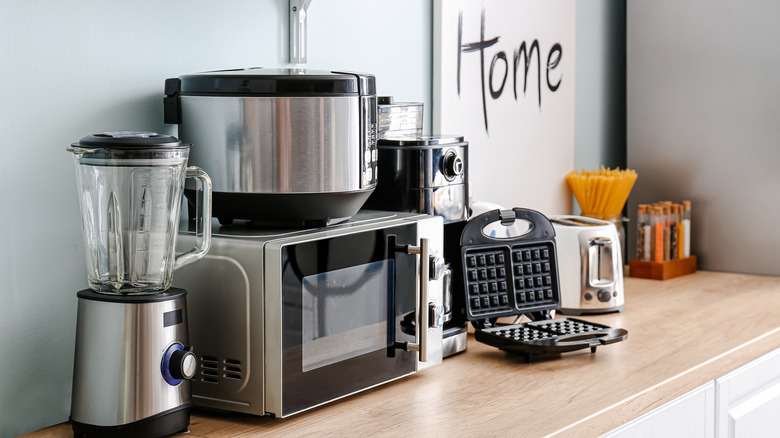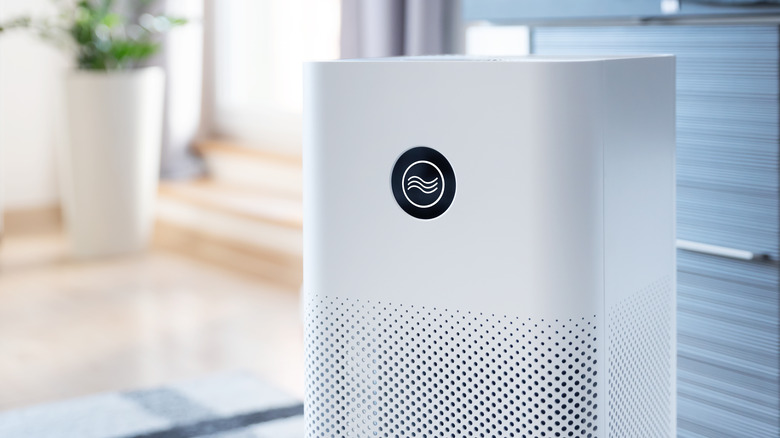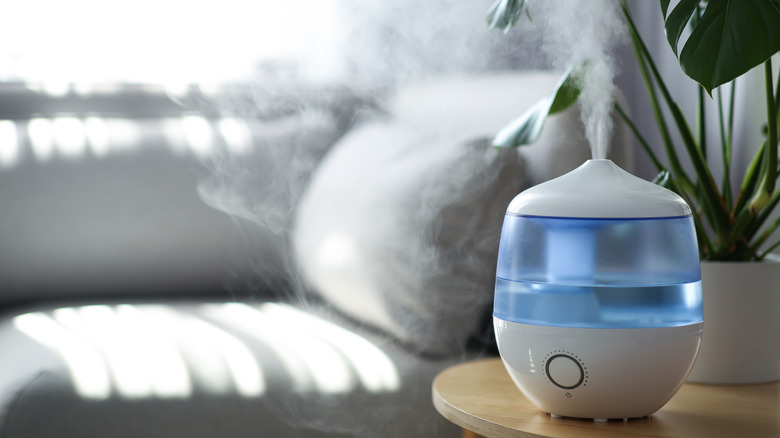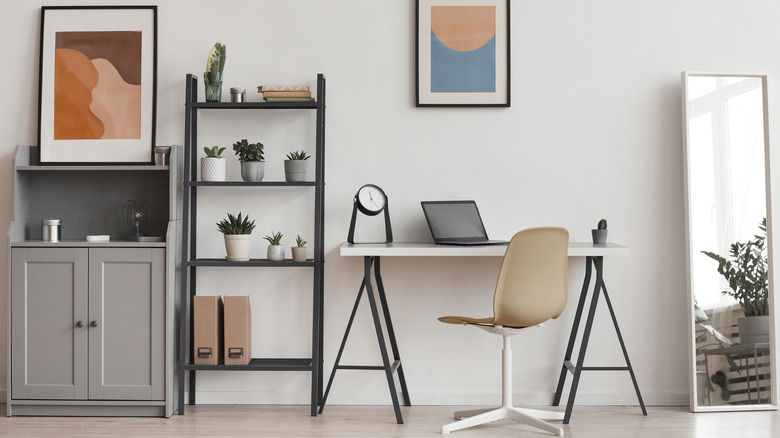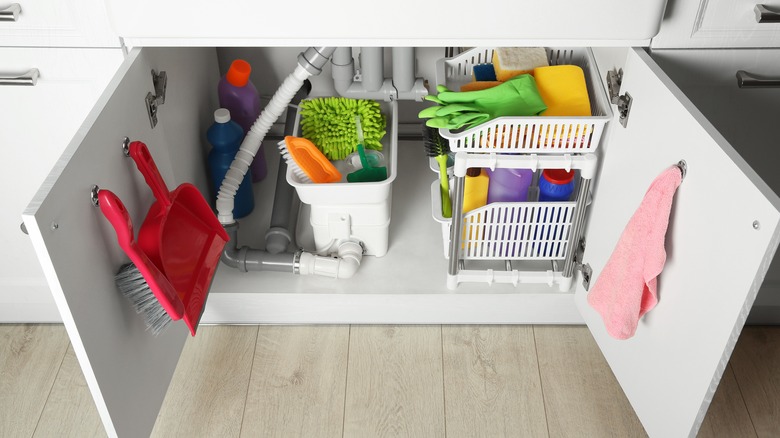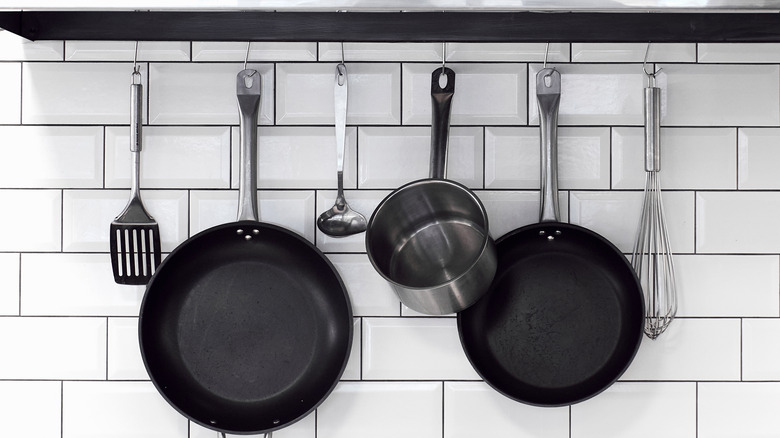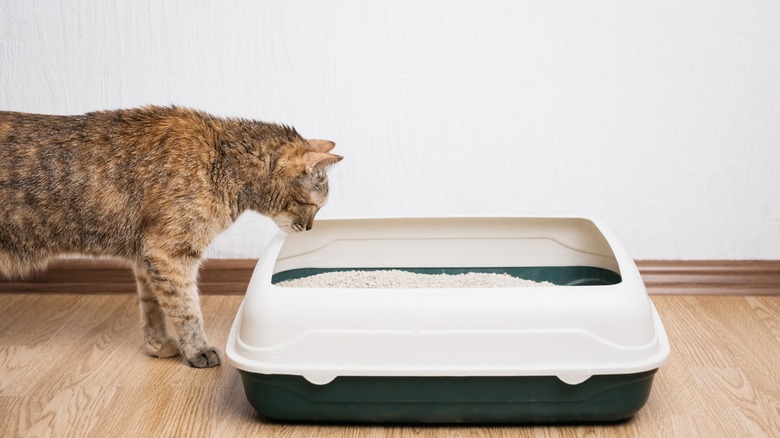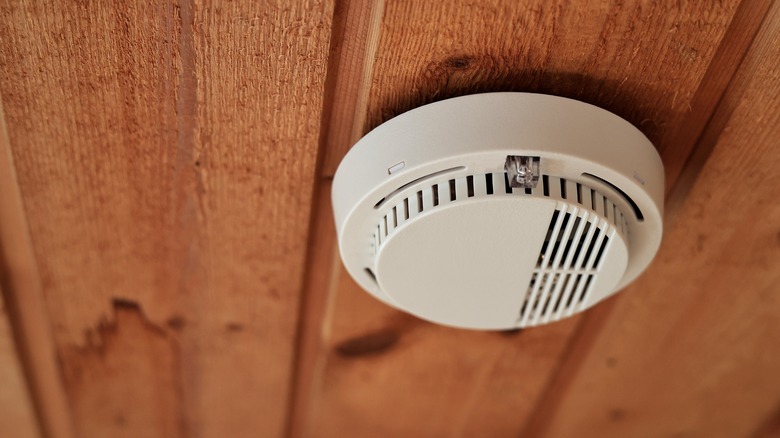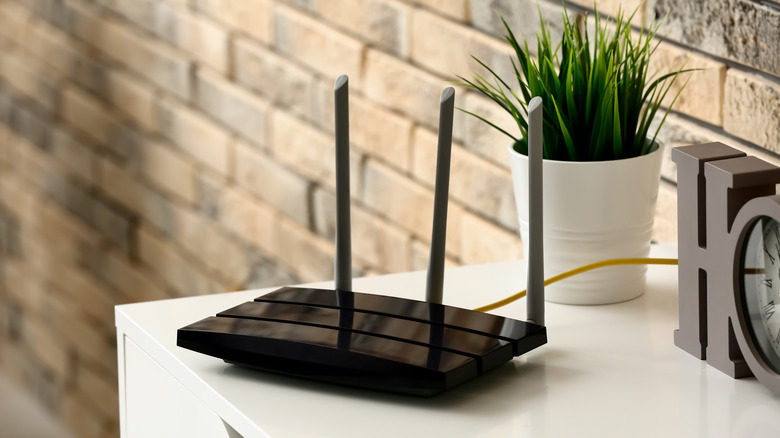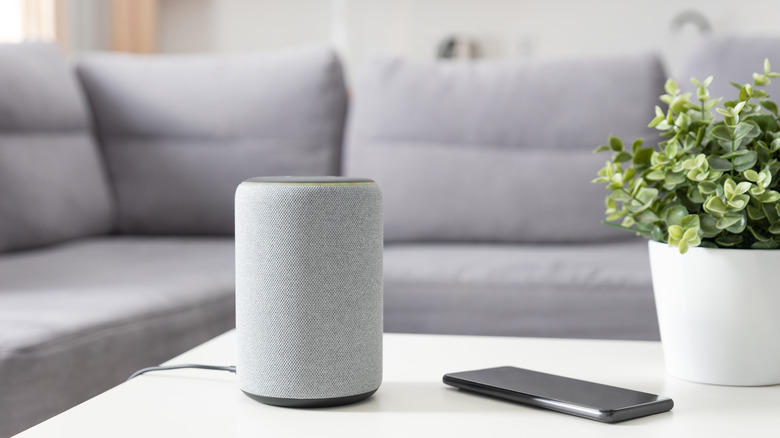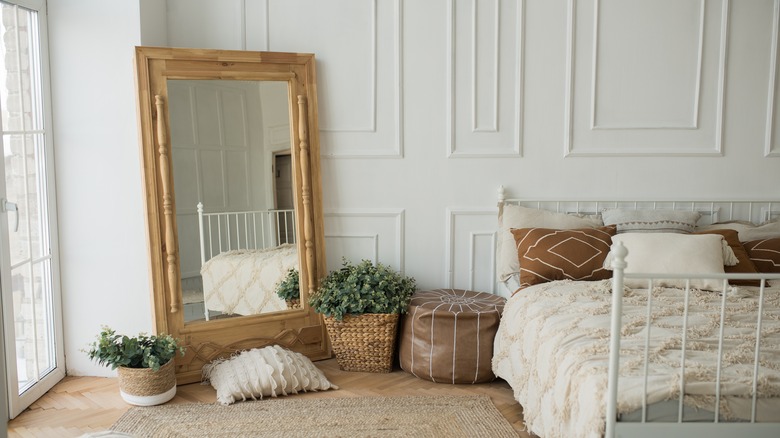15 Common Household Items And Where You Really Should Be Placing Them
Finding the right place for all the items in your home will not only help it look more organized but will help make it more functional. According to Homes by Taber, while having the right floor plan can play an important role in the functionality of a space, there are several other ways you can improve the flow and function of your home.
A few of the ideas they share include making sure that each room in your home has a purpose and thinking carefully when choosing how and where to store items for either short- or long-term needs. It is also important to think about the ideal layout of each space and where you should place furniture pieces. Developing and sticking to a cleaning and organizing schedule can help you maintain the systems you put in place. Read on to learn how the proper placement of common household items can help you maximize the functionality, comfort, and safety of your home.
Sofa
According to Bel Furniture, the ideal placement for a sofa can vary based on the size of your living room. Placing the sofa against one of the walls can help make a smaller room feel larger. With a more spacious living room, placing the sofa more toward the center of the space can provide easier access to it from different angles. When placing the sofa in the room — whether large or small — remember to leave a minimum of 18 inches between it and the wall for optimized traffic flow. You can also place your sofa across from a window, fireplace, or another focal point in the room for a balanced look.
Drawing out diagrams on paper can help you play with different layouts, but sometimes you need a life-sized idea of what configuration works best in your space. To get a good feel for a layout, start with an empty room. Use painter's tape shapes on the floor to simulate the footprint of your couch and other pieces of furniture. You can get an idea of how the room will flow and can easily move the tape outlines around until you pinpoint your arrangement.
In addition to considering traffic flow and room size, you may also want to think about feng shui recommendations for furniture placement. ExtraSpace Storage notes that feng shui practices advise against placing sofas in front of windows or placing it in the middle of the room. Rather, they recommend placing a sofa along a stable wall in the space as it can make the individuals in the home feel safer.
Dining table
Not all homes have a dedicated formal dining room anymore. With open floor plans and eat-in-kitchens, the ideal placement for a dining table isn't always clear. Neptune recommends thinking about whether you want your dining table to be a feature of your home, or just a functional piece, to help you decide where to put it. If you regularly entertain or want to make family meal times more of an event, then you will want to choose a location that will make your table more of a focal point. In this case, place your dining room table in a more central location close to a large window, a piece of artwork, or even the fireplace.
Another thing to consider is the shape and proportions of your dining table. Larger square or round tables will work best in open spaces, while a narrower, rectangular one will be optimal for a space that isn't very wide. Think about the lines of the table and the walls around it, and position it in a way to help it mirror the space.
Finally, think about the types of chairs you have, or plan to have. With upholstered chairs, you'll want to have a little more space because they look best when there is room between them and the edge of the table. Large, imposing upholstered chairs will likely feel out of place in an eat-in kitchen if you're going for more of a laid-back feel. More simple wood chairs would likely be the better choice for this placement.
Television
There are several factors to consider when trying to decide where to put a TV. Popular Science explains that the optimal viewing distance between the television and where you sit depends on the size of the screen. For example, with a 42-inch TV, you should sit approximately 5.9 feet away to have the best view of the screen. However, with a 75-inch TV, the ideal distance increases to 10.5 feet.
You also want to sit right across from the TV, so you'll be looking at it directly, not at an angle. So, you should also consider where your couch is and how you could move it to ensure a direct view of the screen. If this isn't possible with the layout of your room, add an adjustable wall mount. This allows you to angle the screen towards the couch when you want to watch a movie or show. Thinking about the height of the TV is also important. You don't want to hurt your neck by having to look too high up every time you watch television. To avoid this, hang your TV at a comfortable height for viewing from a seated position.
Finally, take note of the light sources in the room when you're deciding where to put your television. Pick a spot in the room where the TV will not be in the path of sunlight coming through the windows. This can cause glares that make it impossible to see the screen.
Coffee table
Comfyco Furniture explains how coffee tables can both enhance the overall aesthetics of a room while also increasing its functionality. Before you decide where you want to put your coffee table, you'll want to think about how you plan on using it. Some common uses include holding food and drinks when entertaining and displaying books and magazines for leisurely reading. It might also be used to provide a home for remotes or display vases and other decorative items.
Once you've decided how you want to use the coffee table, it can help you decide which placement option is ideal for your needs. One of the most common options is to put the coffee table in front of the sofa. This can provide easy access for snacking or a spot to play games. If you have a large living room, you may decide to put the coffee table in the middle of the space. However, if your space is smaller or you have a lot of other furniture, you might find that this impedes the traffic flow. Alternatively, you could place two smaller coffee tables flanking the sofa instead. This can open up the space more while still offering a place to hold decorations and drinks.
Small kitchen appliances
Toasters, blenders, crockpots, and other small appliances can be staples in many kitchens. However, whether you use these on a daily basis or just every few months, they can take up a lot of countertop or cabinet space. Deslaurier Custom Cabinets Inc. shares a few design tips that can help you hide these small appliances, while still keeping them easy to access when you need them.
One idea is to make an appliance garage. Just as your car's garage gives you an easily accessible spot to park, an appliance garage can do the same for your kitchen equipment. Appliance garages are often designed by adding doors to enclose a section of your countertop. When you're ready to use one of your appliances, open up the door, and you'll have easy access. Then, when you're done, simply lower the door to neatly tuck the appliances away.
If your kitchen has an awkward corner cabinet, you can also take advantage of this often-wasted space. Sliding shelves designed for the purpose can allow you easy access to small appliances stored here. Or, have the current cabinet swapped for a Lazy Susan option, giving you optimal access and maximizing your storage space.
Air purifier
According to Air Purifier First, place an air purifier close to the source of the contaminants you're trying to combat so it can contain the pollution or odors. The purifier removes these elements and stops them from spreading throughout the rest of the home. Putting the air purifier near an exterior doorway can also reduce the number of outdoor irritants like pollen that enter the home.
Another important thing to consider before deciding where you want to put an air purifier is the size of the room. You don't want to put a small air purifier in a room that is too large for it. In this scenario, the air purifier won't be able to keep up with effectively filtering the space. Fortunately, models are usually marked with the square footage of the rooms they're designed to cover. This takes the guesswork out of finding the right one for each room in your home.
Air purifiers also need space to work and for air to flow on all sides of the unit. For this reason, you should not place one in a tight corner or too close to furniture. Larger units work just fine on the floor but many small units work better when elevated on a table or shelf. Some space-saving models are also designed to be wall-mounted. So, you can install these in a central location where they would otherwise be in the way on the floor.
Humidifier
Keeping a humidifier in your bedroom can help ease sinus irritation and keep your skin, lips, and eyes from getting too dry during the winter months. However, as Weather Station Advisor shares, a unit that is too close to your bed may be too loud or have bright lights that can disrupt your sleep. Place the humidifier three or more feet away from the bed to ensure you sleep soundly while still benefiting from the increased humidity in the room.
A poorly placed humidifier could potentially cause furniture or other items to become too damp, allowing mold to form. Units should be placed a minimum of a foot away from items like furniture, curtains, and walls. Similarly, make sure that the humidifier's nozzle is aimed away from these items and direct it towards the center of the room when possible.
Ideally, you should cover a table or stand with a water-resistant tablecloth to elevate the humidifier two or more feet off of the ground. This will help prevent water from pooling on your carpets or floors and will also ensure a better distribution of the mist throughout the room. You also should never put your humidifier near direct sunlight or a heat source.
Desk
If you're creating a home office, think about the ideal placement for the desk before you place the other furniture pieces in the room. Plank & Pillow explains that considering the view from the desk is important. Ideally, aim to have your desk in the center of the room, facing the door. With this placement, you'll be able to monitor the doorway and avoid getting too distracted by looking out the window. However, some individuals benefit from being able to glance outside and see their surroundings and some sunlight. If this matches you, then you may want to face your desk towards the window.
It is also important to consider the size of your desk as you're determining where to put it. A small one may look out of place in the center of the room and may be better off if placed along one side of the room. Similarly, if you have more than one desk, placing them on opposite sides of the room to create two work zones may be a good idea. To avoid having long extension cords running across your office floor, you'll also want to think about where the electrical outlets in the room are located.
Cleaning supplies
If you're like many, you have a wide range of cleaning products for your kitchens, bathrooms, floors, windows, and other areas of the home. Finding a safe and convenient spot to store these cleaners can be a challenge. Merry Maids explains that one of the first things you should do before storing cleaning supplies is to consult the manufacturer's labels. Some products shouldn't be stored in rooms that get too hot or cold, while others should be kept away from certain chemicals to avoid potentially dangerous reactions.
If you have children or pets, you'll have to take extra precautions when storing many of your cleaning supplies. Disinfectants or other chemicals can be dangerous if swallowed or spilled on the skin. These should be kept in a location where kids or animals can't access them. The top shelf of a locked closet or a secure storage cabinet in the laundry room can be safe options.
After you've decided on the ideal storage locations for your various cleaning products, finding a way to keep them organized will make it easier when it's time to clean. Consider using caddies to hold products that you commonly need in certain areas. You can also store products in a wheeled tote to make them easier to move around the house. Or, create storage bins in a central location and group similar products together for easy access.
Pots and pans
No kitchen is complete without several pots and pans. However, these items are bulky. When you add all the individual lids into the equation, it is easy for your cookware collection to turn into a disorganized mess. Perry Homes suggests several storage solutions to help keep your pots and pans organized.
One idea is to hang them from the ceiling. They will be easy to grab when needed and won't get all mixed together. Hanging your cookware can also help prevent accidental scratches that result from stacking them together in a cabinet. Depending on the overall look and decor of your kitchen, you can make the hanging cookware a focal point of the space. Before choosing this option, confirm that the handles of your cookware have holes that will allow them to be hung.
Another option is to purchase a vertical pot rack. This type of storage accessory can go in a corner that may otherwise be wasted space. Again, your pots and pans will be easy to access when needed. Plus, because there are individual shelves, you won't have to stack them together and risk scratching the finish. You could also purchase a pot rail that attaches to the wall. This way, you can hang your cookware where you'll be able to easily grab it. If the cabinet is really the only practical storage spot, or you simply prefer to keep them out of sight, use cookware protectors to prevent the finish from getting scratched when you stack them.
Cat litter box
If you have cats, then you also have a litter box. Finding a spot to keep it that is easy to access but far enough away from living areas to hide the odor is tough. Arm & Hammer explains that it is important to choose a quiet spot for your cat's litter box. Corners are often ideal, as the cat will be able to monitor the area around them and make sure they aren't being threatened as they go.
Litter boxes should be kept away from higher traffic areas or loud appliances, as cats prefer privacy and tend to be spooked by loud noises. However, the location also shouldn't be too far from the areas where your cat spends most of their time. You don't want the distance to deter him or her from using it. Cats don't like going to the bathroom near the areas where they eat or sleep, so take care to make sure that the litter box is away from their food and bed.
Once you choose a spot, try to leave the litter box in the same location. If you move it, your cat may become confused or begin urinating in other places. Depending on how many cats you have or how large your home is, you also may want to consider having more than one box in different rooms in the home.
Smoke detectors
Properly placing the smoke detectors in your home is essential. If they aren't placed in the right spots, they may not alert you as quickly to a fire in the home. This could prevent you from getting out in time or from stopping a small fire before it grows too large. The National Fire Protection Association explains that smoke detectors should be placed on every level of a home, even in basements. It is also recommended to have a unit inside every bedroom and outside of sleeping areas. For levels of the home where there are no bedrooms, aim to put a smoke detector in the family room or close to the staircase. For kitchens, install one a minimum of 10 feet away from the oven and other cooking appliances to prevent too many false alarms.
Beyond knowing which rooms you should put a smoke detector in, it is also important to know where they should be placed. Because smoke rises, it is essential to put the units on the ceiling or toward the top of the wall — less than a foot below the ceiling. It is also advised to avoid putting a smoke detector in a spot where a draft could prevent it from working properly. This means that you should keep them away from air ducts, doors, and windows.
Wi-Fi router
If you want to maintain the strongest Wi-Fi signal for all of your electronics, HighSpeedInternet.com shares that proper placement is key. Start by finding a central location in the home. This will ensure that the signal will extend to all of the rooms in the home. Conversely, if you place your router in a corner of the home, the basement, or one of the upstairs rooms, the range may not extend enough to cover the entire home.
Elevating the router can also help maximize the signal. Similarly, it is important to make sure that there are no obstructions in the way of the unit. When possible, avoid placing it in a location where metal, stone, or tile will be between it and your devices, as these materials can weaken the signal. Finally, try to find a location that isn't too close to other electronic devices in your home. These devices, particularly microwaves, can negatively interfere with the signal.
Smart speakers
Amazon Echo, Google Nest, and other smart speakers allow you to play music on demand and control your smart devices. However, they'll be much more useful to you if you're purposeful about where you place them. MUO highlights that placing them in frequently used spaces like living rooms, kitchens, and offices allows you to get the most out of your smart speaker. They can also be added to bedrooms for easy-to-set alarms or the garage for some outdoor tunes.
As you're deciding where to put your smart speaker, CNET shares that there are also some locations you'll want to avoid. Bathrooms, especially right near a toilet, aren't a great location. There's just too much bacteria and moisture that you'll be risking accidental damage. Don't put your speaker near a sink, as splashing water could also cause damage to the device. They should never be placed by windows as someone could potentially operate them from outside and access your other paired devices. Last, but not least, don't put a smart speaker under a TV. Doing so could cause it to respond to voices on the television which could give it commands that you didn't authorize.
Bed
As you're considering where to place your bed, everything from its size to your room's layout comes into play. Anchoring your bed on your room's largest wall can create balance and order in your space. However, you also might have to work around objects like windows or doorways and get creative with an off-centered position.
A practice known as vastu shastra can also help with bed placement. Yogapedia defines vastu shastra as the "science of architecture." This Sanskrit term, which is commonly referred to as the yoga of design, is believed to improve the energy in a home. The ideal placement of a bed according to vastu shastra is on the southwest wall. However, this isn't the only variable to consider. You also want to make sure that it doesn't face or block the door. Moreover, the head of the bed must not face north and there should be a minimum of four inches of clearance between the walls on all sides. When these criteria are taken into account, it may help improve your sleep patterns, increase your energy levels, and decrease the daily stress you feel.
